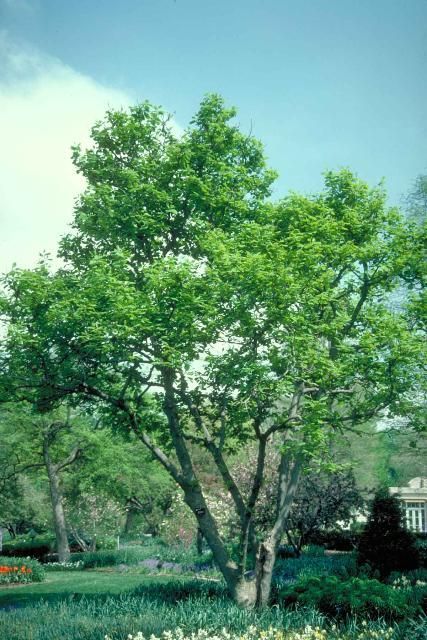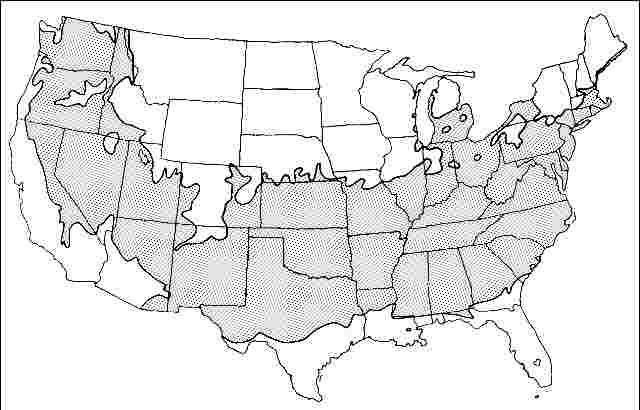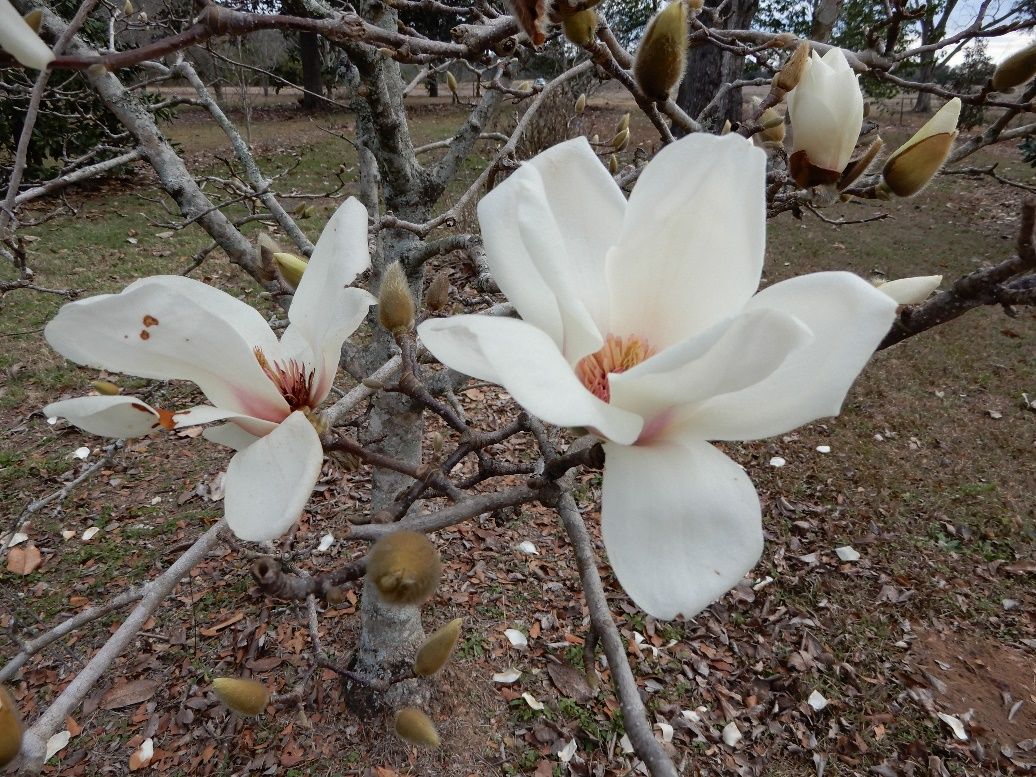Introduction
Also known as Magnolia heptapeta, this broad, spreading, deciduous tree has a relatively fast growth rate and eventually reaches 30 to 40 feet in height with an equal spread. The crown is open and forms a rounded outline several years after planting in full sun. The off-white, saucer-shaped, six-inch-diameter, fragrant blooms appear on the trees before the emergence of the seven-inch-long, dark green leaves. The blooms are followed by five-inch-long, brown fruits which ripen in early fall to reveal the bright red, inner seeds. Although there is no appreciable fall color change, the multi-stemmed, irregular form of Yulan magnolia makes it quite striking in the winter garden after the leaves have fallen.

Credit: Ed Gilman, UF/IFAS
General Information
Scientific name: Magnolia denudata
Pronunciation: mag-NO-lee-uh den-yoo-DAY-tuh
Common name(s): Yulan magnolia
Family: Magnoliaceae
USDA hardiness zones: 5B through 8A (Figure 2)
Origin: not native to North America
Invasive potential: not assessed/incomplete assessment
Uses: deck or patio; container or planter; specimen; espalier; highway median

Credit:
Description
Height: 30 to 40 feet
Spread: 30 to 40 feet
Crown uniformity: irregular
Crown shape: round, spreading
Crown density: open
Growth rate: moderate
Texture: coarse
Foliage
Leaf arrangement: alternate (Figure 3)
Leaf type: simple
Leaf margin: entire
Leaf shape: obovate, oblong
Leaf venation: brachidodrome, pinnate
Leaf type and persistence: deciduous
Leaf blade length: 4 to 8 inches
Leaf color: green
Fall color: no color change
Fall characteristic: not showy

Credit:
Flower
Flower color: white/cream/gray (Figure 4)
Flower characteristics: very showy

Credit: Marc Frank, UF/IFAS
Fruit
Fruit shape: elongated
Fruit length: 1 to 3 inches
Fruit covering: dry or hard
Fruit color: brown, red
Fruit characteristics: attracts birds; showy; fruit/leaves not a litter problem
Trunk and Branches
Trunk/bark/branches: branches droop; not showy; typically multi-trunked; thorns
Pruning requirement: needed for strong structure
Breakage: resistant
Current year twig color: green, brown
Current year twig thickness: medium
Wood specific gravity: unknown
Culture
Light requirement: full sun, partial sun, or partial shade
Soil tolerances: sand; loam; clay; acidic; well-drained
Drought tolerance: moderate
Aerosol salt tolerance: unknown
Other
Roots: not a problem
Winter interest: yes
Outstanding tree: yes
Ozone sensitivity: tolerant
Verticillium wilt susceptibility: susceptible
Pest resistance: free of serious pests and diseases
Use and Management
This small tree is best used as a patio tree for shade and accent due to the low branching habit, attractive foliage and striking gray bark. It would look very nice lining an entrance walk to a commercial building or in a double- or single-row set-back from an entrance roadway or long driveway. It grows well in urban areas but avoid poor, compacted soil. It is suitable for an urban garden.
Yulan magnolia should be grown in full sun or partial shade on rich, moisture-retentive soil in an area protected from harsh, dry winds. Plants should not be exposed to overly wet or dry conditions.
Available cultivars include: ‘Japanese Clone', larger flowers; ‘Lacey', flowers up to eight inches across. Yulan magnolia was used as a parent plant along with Magnolia acuminata to produce the hybrid ‘Elizabeth' which has a pyramidal shape and clear yellow, fragrant blooms.
Propagation is by seed sown immediately after ripening since they will quickly lose their viability. Sometimes cuttings of these trees are grafted onto Magnolia x soulangiana.
Pests and Diseases
No pests or diseases are of major concern, but it is occasionally bothered by magnolia scale, as are many other magnolias.